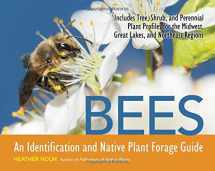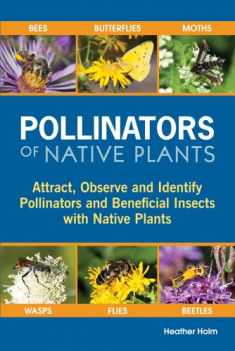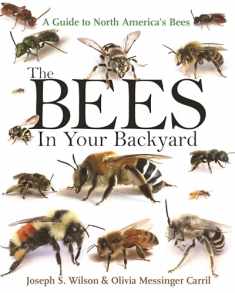
Bees: An Identification and Native Plant Forage Guide
ISBN-13:
9780991356355
ISBN-10:
0991356357
Edition:
First Edition
Author:
Heather N. Holm
Publication date:
2017
Publisher:
Pollination Press LLC
Format:
Paperback
224 pages
Category:
Gardening
,
Encyclopedias & Subject Guides
FREE US shipping
Book details
ISBN-13:
9780991356355
ISBN-10:
0991356357
Edition:
First Edition
Author:
Heather N. Holm
Publication date:
2017
Publisher:
Pollination Press LLC
Format:
Paperback
224 pages
Category:
Gardening
,
Encyclopedias & Subject Guides
Summary
Bees: An Identification and Native Plant Forage Guide (ISBN-13: 9780991356355 and ISBN-10: 0991356357), written by authors
Heather N. Holm, was published by Pollination Press LLC in 2017.
With an overall rating of 4.0 stars, it's a notable title among other
Gardening
(Encyclopedias & Subject Guides) books. You can easily purchase or rent Bees: An Identification and Native Plant Forage Guide (Paperback) from BooksRun,
along with many other new and used
Gardening
books
and textbooks.
And, if you're looking to sell your copy, our current buyback offer is $3.89.
Description
2018 American Horticultural Society (AHS) Book Award2018 Midwest Independent Publishing Association (MIPA) Finalist: Nature2017 Independent Publisher (IPPY) Silver Book Award: Environment, Ecology, and Nature2017 Next Generation Indie Book Award (NGIBA) Winner: Regional Non-Fiction2017 Next Generation Indie Book Award (NGIBA) Finalist: Science, Nature, Environment2017 National Indie Excellence Award (NIEA) Winner: Nature
BEE IDENTIFICATION SECTION
Bees are a singularly fascinating group of insects and this book makes it possible to observe, attract, and support them in their natural setting or in one's own garden. Not only does this guide assist the reader with bee identification in the field or by photo, it also notes microscopic features for the advanced user. The factors impacting bee populations, and the management of farms and public and residential landscapes for bees are also covered. Included in the bee forage (plant) chapters are plant profiles with range maps, habitat information, floral features and attractants, common bees attracted to the particular plant, and details about the ecological connections between the native plant and other flower-visiting insects. Noted also are birds dependent upon the product of the pollinated flowers (fruits and seeds).
This is an excellent reference for amateur and professional naturalists, educators, gardeners, farmers, students, nature photographers, insect enthusiasts, biologists, and anyone interested in learning more about the diversity and biology of bees and their connection to native plants and the natural world.
BEE IDENTIFICATION SECTION
- A comprehensive guide illustrating the bees that occur in north-central and eastern United States and southern Canada
- In-depth profiles of 27 bee genera covering the life cycles, habitats, diet, foraging behaviors, crops pollinated, plant specializations, nesting lifestyles, seasonality, and preferred native forage plants
- 12 additional summary profiles for uncommon genera
- Comprehensive profiles of approximately 100 native trees, shrubs, and perennials for the Midwest, Great Lakes, and Northeast regions including insect and bird visitation information and bee specializations
- Over 1500 stunning photographs, detailed descriptions, and accessible science
Bees are a singularly fascinating group of insects and this book makes it possible to observe, attract, and support them in their natural setting or in one's own garden. Not only does this guide assist the reader with bee identification in the field or by photo, it also notes microscopic features for the advanced user. The factors impacting bee populations, and the management of farms and public and residential landscapes for bees are also covered. Included in the bee forage (plant) chapters are plant profiles with range maps, habitat information, floral features and attractants, common bees attracted to the particular plant, and details about the ecological connections between the native plant and other flower-visiting insects. Noted also are birds dependent upon the product of the pollinated flowers (fruits and seeds).
This is an excellent reference for amateur and professional naturalists, educators, gardeners, farmers, students, nature photographers, insect enthusiasts, biologists, and anyone interested in learning more about the diversity and biology of bees and their connection to native plants and the natural world.


We would LOVE it if you could help us and other readers by reviewing the book
Book review

Congratulations! We have received your book review.
{user}
{createdAt}
by {truncated_author}




